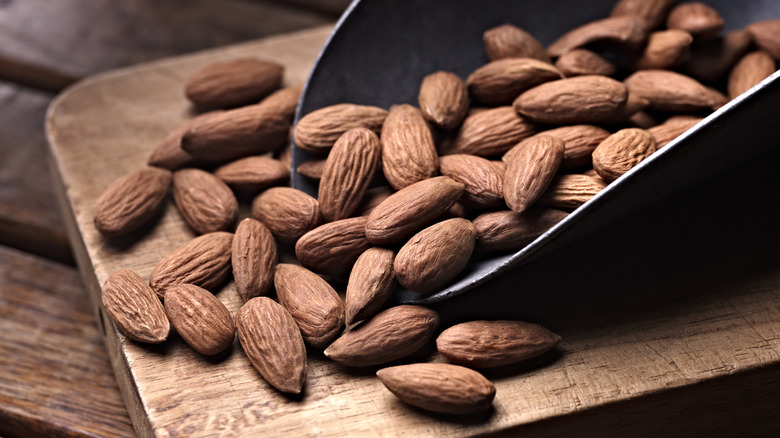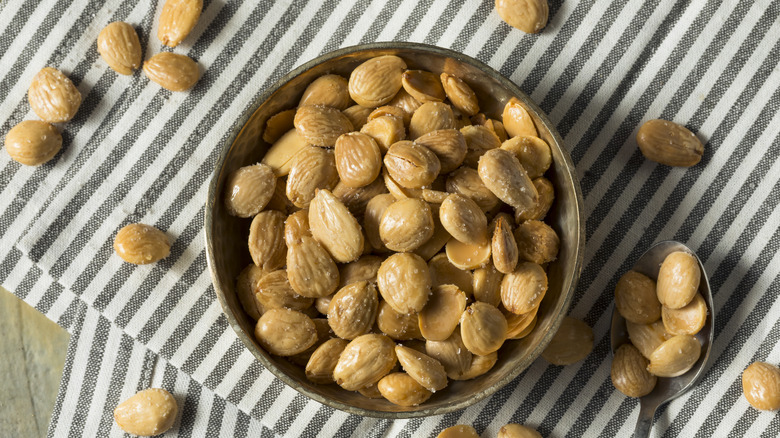What Is The Difference Between Almonds And Marcona Almonds?
What is the difference between almonds and Marcona almonds besides the price tag? To say that almonds are having a moment would be a bit of an understatement. While people have been munching them for millennia, increased consumption of foods rich in protein and healthy unsaturated fats (such as almonds) has completely transformed the global nut industry.
The United States is the world's biggest almond producer, per Statista. According to the USDA, the state is projected to yield another 2.6 billion meat pounds in 2023. However, the most highly prized variety comes from Spain. Often served blanched, roasted, dusted with sea salt, and tossed with enough extra virgin olive oil to give them a seductive sheen, nothing elevates a gourmet meat and cheese platter like a handful of Spanish Marcona almonds. What makes them such a hot commodity?
Marconas — also known as the Queen of Almonds — are easy to tell apart from standard California varieties. Besides being rounder and flatter in shape, they tend to be significantly more expensive and difficult to find at the grocery store. Aaron Brown, who runs the California Marcona Company and Almondipity with wife Norik Naraghi, explained that Marcona almonds are "a little bit softer and have a much thicker shell and skin" than those commonly grown in the United States. Their flavor is more buttery and earthy; they also roast well, which gives them a satisfying crunch and texture similar to macadamia nuts.
How different almond varieties are used
Considered the high-end standard of California-grown almonds, the Nonpareil is typically bigger, longer, pointed on one end, and has a lighter-colored skin. Different varieties lend themselves to specific preparations. Nonpareils are a fantastic choice for snacking compared to other types, like the Fritz or Butte, which work better for roasting, flavoring, and making almond butter. The Sonora works well for blanching and slicing.
Another differentiator is how different types of almonds are consumed. The concept of "snacking almonds" is relatively modern; throughout history, nuts have mainly been used for cooking and baking. In Spain, Marconas are one of several local varieties typically used to make desserts like marzipan or turrón (a traditional candy nougat) or sprinkled over salads. "In the U.S., it's turned into a specialty product, and it's not that easy to get in serious bulk," said Aaron Brown.
According to Brown, approximately 85% of the world's almonds are produced in California, while only about 5% comes from Spain. "Even if 20% of that is Marcona, it's still minuscule," Brown pointed out. As Marcona almonds are comparatively rare, they typically sell for $16 to $20 per pound and are nearly twice as expensive as California-grown Nonpareils. "[Marconas] may look the same, but you get half the yield per acre because of the thickness of the shell and hull," said Brown. Like a typical monarch, the Queen of Almonds is a tough nut to crack.

